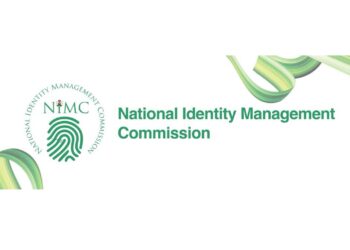Joy Eneghalu, writes about Product Requirement Documents (PRDs)
====
One of the many things I have written in my life after my name is a product requirements document also known as a PRD.
A product requirements document (PRD) is a detailed document that outlines the key features and requirements for a product. Consider it a roadmap for the development team that ensures that the product meets the needs of the target market and delivers value to the business.
As a product manager, you’ll find that Product requirements documents (PRDs) are used by a variety of stakeholders in the product development process.
These stakeholders include the development team, product team, marketing and sales team, executive leadership, and external partners.
When writing a Product Requirement Document (PRD), there are elements it should include to help all stakeholders understand what you are communicating and also to manage expectations.
Most of my written PRDs have elements that I consider must-haves and they help guide my process in detailing all that there is to know about the product I am building. Let us look at some of these elements.
Looking at the PRD I created for one of my side products, the first thing I wrote was the product vision and strategy. It should be a clear and concise statement of the product vision and strategy, including the goals and objectives of the product and the value it will provide to the target market.
Right after that, I wrote a list of the key features and requirements for the product, including any functionality, performance, or usability requirements. Each feature is clearly defined and prioritised to ensure that the development team has a clear understanding of what needs to be delivered and when.
The next step was to identify the target audience for the product, including demographic and behavioural characteristics.
This will help inform the overall direction and goals of the product and ensure that the features and requirements are tailored to the needs and preferences of the target market. User stories are the next to consider as they are short, concise descriptions of user actions that describe the value that the product will provide to the user.
To add more information to the Product Requirement Document (PRD) and provide clarity to the development team, I added supporting materials, such as wireframes, prototypes, or user flows, to provide visual context and help the development team understand the desired user experience.
The next step was to think about any possible limitations, dependencies or constraints that may impact the development of the product, such as technical limitations or budget constraints.
I also had to set and add my “definition of done” which is simply a set of criteria that must be met before the features are considered complete. It helps ensure that the development team delivers high-quality features that meet the needs of the target market.
Another important thing to set was the acceptance criteria. A tip here is to ensure that your acceptance criteria are specific, measurable, and testable conditions that must be met in order for a feature to be accepted. They help ensure that the development team delivers features that meet the desired specifications and expectations.
The last steps I took were to add a release plan outlining the key milestones and deadlines for the product, including the planned release date and any beta or pilot testing that will be conducted and also to add a marketing and sales plan that included a plan for how the product will be marketed and sold, including target market segments, pricing strategies, and distribution channels.
With these features in my PRD, I consider it comprehensive enough to give the necessary information needed. Some product managers keep a lean PRD.
A lean PRD is simply a one-pager with elements like product specifics, goals, user stories, assumptions and problems to solve. From my experience, this totally depends on the kind of product you are building.
A product that won’t have features, probably in its MVP (minimum viable product) stage will not need a very robust Product Requirement Document (PRD).
In my over three years of experience, I have always referred to PRDs as a map and that’s because they provide a comprehensive overview of the product vision, features, and requirements, and help ensure that the development team has a clear understanding of the product goals and desired outcomes.
The only thing to build if you don’t have your Product Requirement Document (PRD) is chaos and this shows you how important this document is in charting the course of your product. In 2019, I worked with an eCommerce product-led company and though it was a different industry from what I was used to, after reading and researching, I worked on my first PRD which surprisingly was reviewed and accepted by the executive leadership.
They had a clear understanding of the product vision, goals, and requirements. It answered their questions, raised new questions and provided a comprehensive overview of the product, facilitating better communication and collaboration between the development team and other stakeholders.
It also helped the development team prioritise and plan their work by outlining the key features and requirements for the product.
This ensured that the team focused on the most important tasks and delivered the highest-value features first. Another thing our Product Requirement Document (PRD) helped reduce was the risk and uncertainty associated with product development.
It mitigated delays and setbacks and helped the team stay on track and delivered the product on time. We worked with common tools like slack, Trello, Google docs to ensure collaboration and avoid all the back and forth.
During the product test, the Product Requirement Document (PRD) played a huge role as well. Prospective customers had different complaints based on their experiences and we worked on all the raised tickets. By the time we launched the product, thanks to our PRD, we improved customer satisfaction and increased the chances of success for our product. This helped us onboard 30% more customers than our initial documented goal.
Lastly, I will say that one of the biggest benefits of having a Product requirements document (PRDs) is to ensure that the product is aligned with the overall goals and objectives of the organisation.
We wanted to solve the problem of distribution in the B2B retail market and we created a product to help us achieve that. All the features we have on the product today tailors to the main goal of the organisation.
So, how then do you write a PRD that is effective and clearly communicates the research done? Just as in business, you must build to solve a problem and in solving a problem, you must decipher who you are building for. The first step in writing a Product requirements document (PRD) is to identify the target audience for the product.
This will help inform the overall direction and goals of the product and ensure that the features and requirements are tailored to the needs and preferences of the target market. Like we say at work, a product that does not solve a problem is a toy.
Your next approach will be to outline the key features and requirements for the product including any functionality, performance, or usability requirements.
Each feature should be clearly defined and prioritised to ensure that the development team has a clear understanding of what needs to be delivered and when.
In creating a PRD, you should also include any dependencies or constraints that may impact the development of the product, such as technical limitations or budget constraints. You have to think of anything at all that may hinder the development of the product. When this is done, I like to include supporting materials such as wireframes, prototypes, or user flows, to provide context and clarity for the development team.
The last thing to do once the Product requirements document (PRD) is complete is to revise it. As a product manager, I’d review and revise as needed to ensure that it is accurate and complete. This should involve input from your cross-functional teams or stakeholders to ensure that all perspectives are considered.
There are tons of different templates and tools that you can use to write an effective Product requirements document (PRD), however, I have helped you to find a resource you can use regardless of the kind of product you are building and you can find it here. It contains varieties of well-written Product requirements documents (PRDs).
From experience, I will say that a well-written product requirements document (PRD) is an essential tool for ensuring the success of a product because it makes the work of the team easier, provides a clear and comprehensive overview of the key features and requirements and helps ensure that all stakeholders have a clear understanding of the product vision and goals.











